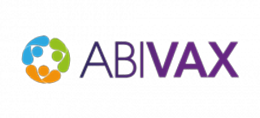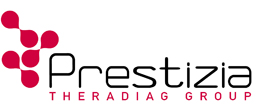Even though fundamental research is IGMM major aim, the institute has always had strong relationships with industry through continuing education for certain companies, patenting and licensing of its discoveries, regular research contracts, scientific consulting by some of its members, various partnerships and hosting of staff members of private companies.
Moreover, the intellectual property generated by groups of IGMM led to the creation of 3 start-ups since 2008:
Abivax Company

The intellectual property generated by the Tazi group on alternative splicing and on the identification of splicing inhibitors led to the creation of the biotech company Splicos in 2008. This creation was rapidly followed by the launching of a mixed structure between the CNRS, the University of Montpellier and Splicos ("Splicos Therapeutics" cooperative laboratory) in 2009. This structure, localized at IGMM and led by Jamal Tazi, comprized academic staff members and personnel from Splicos working on a common project aiming at developing novel antiviral agents. It was supported by the Strategic Inovative Industry fund (ISI) from OSEO, the former French agency for small and medium size entreprises.
In 2014, Splicos merged with two other companies, Wittycell and Zophis, to give the company Abivax. The latter ambitions at developping novel therapeutic approaches to treat a variety of severe chronic infectious diseases. Its project relies on 3 complementary technological platforms. Abivax was stock exchange-listed in 2015 and pursued its collaboration with IGMM in the form of a new collaborative laboratory (Abivax Therapeutics) shared with the CNRS and the University of Montpellier. This cooperative laboratory develops an original technological platform, RNP-VIR, which received the support of the French investment bank Bpi.
Metafora Biosystems Company
![]()
In 2003, Marc Sitbon's group published the discovery of GLUT1 as the entry receptor for the human retrovirus HTLV (Manel et al. Cell, 2003). This was the first step to the proprietary use of retrovirus-derived components, called RBDs, as new cell surface markers for the metabolic activity of key nutrient transporters. Based on the group's discovery, M. Sitbon, Luc d'Auriol and Vincent Petit created Metafora-biosystems in 2011, a start-up dedicated to the development of RBD-based theranostic tools. Metafora is now marketing MetaGLUT1, a CE-marked landmark diagnostic test supported by the French High Authority for Health (HAS), for the rapid detection of GLUT1 deficiency in newborns. The test allows affected newborns to be immediately started on a compensatory ketogenic diet. Ongoing collaborations between the Sitbon group and Metafora are aimed at the development of new applications, notably in the theranostics of cancer.
Prestizia /Theradiag


The Prestizia company was created in 2011 based on intellectual property generated by Charles Lecellier (Bertrand group) and Valérie Courgnaud (Sitbon group) resulting from a collaborative work on the relationship between HIV subtypes and cellular miRNAs. This company was later acquired by the diagnosis company Theradiag, which allowed us to develop a strong partnership with a new economic partner. Prestizia-Théradiag has collaborated with several teams of IGMM (Bertrand, Hahne, Sitbon) but also other research centers of Montpellier, notably ICM with which the company has won the French "Concours Mondial de l’Innovation" (Bpifrance) in 2014. Since 2016, this company has an activity independent of IGMM.


